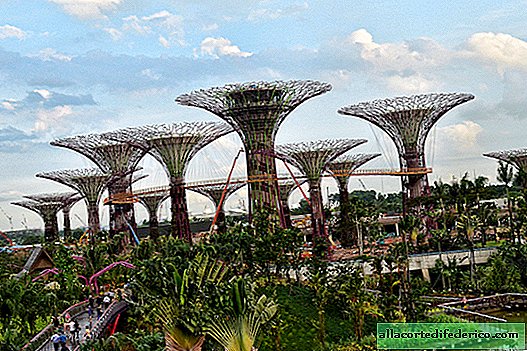How Italians drained Pontic marshes for 2 thousand years
Once the ancient Romans themselves provoked the appearance of vast wetlands south of Rome. This region was teeming with malaria mosquitoes and was completely unsuitable for life. This state of affairs, of course, did not suit anyone, and each self-respecting ruler of Ancient Rome considered it his duty to get rid of this swamp. But the efforts made were successful only after 2,000 years, and the history of the fight against swamps is very instructive, because it clearly demonstrates how easy it is to upset the natural balance of the ecosystem and how difficult it is to return everything back.

According to historical information, in the days of the ancient world this area was called somewhat differently - Pomptinskoe field. Hardworking people lived here who cultivated their fields and led a completely prosperous life. But everything changed after the felling of neighboring forests. Ship builders and wood fuel harvesters were not even aware of the role played by the trees they cut in the local ecosystem. Some time later, the area became unsuitable for life. After deforestation in the local ecosystem, catastrophic changes occurred, the result of which was an extensive wetland area.
Locals left these places, and even traveling along the Appian Way leading to Rome, they tried to quickly overcome this section of the route. The road was built in the IV century BC, and swamps already existed at that time, since the builders had to take into account the difficult terrain when building the road. Hordes of mosquitoes, which were carriers of malaria, made the stay in this place completely uncomfortable. Several Roman emperors, beginning with Caesar, tried to drain these hated swamps. But neither the omnipotent ancient rulers, nor the Catholic clergy, in whose property these lands were transferred after the collapse of the Roman Empire, succeeded.
 The city of Sabaudia is located on the site of the Pontic marshes
The city of Sabaudia is located on the site of the Pontic marshesThey managed to cope with the Pontic marshes only in the 30s of the last century, when the Italian authorities, led by B. Mussolini, declared war on hunger and the country's food dependence on foreign supplies. The country's leadership saw a solution to the problem of increasing sown areas and growing more profitable crops, so the Pontic marshes with an area of 20,000 hectares did not fit into the new economic model of prosperous Italy. In just 1 year, a grand reclamation system consisting of hundreds of canals was set up on the territory of the Pontic marshes. The swamp dried up, and the hated mosquitoes disappeared after it. This area was inhabited by peasants from the poor who built their farms here and founded new cities.
The only ones who were not happy about this outcome of events were representatives of the avifauna. Pontic swamps became home to many birds that found food and convenient nesting places here. In order to save part of the unique wetland ecosystem, it was decided to organize a national park called Circeo.
 Circeo National Park
Circeo National ParkThe history of the Pontic marshes, which for more than 2,000 years haunted Italians, is very instructive. Once again, it shows how unpredictable the consequences of human activity can be and how difficult it is to restore what was lost.

















